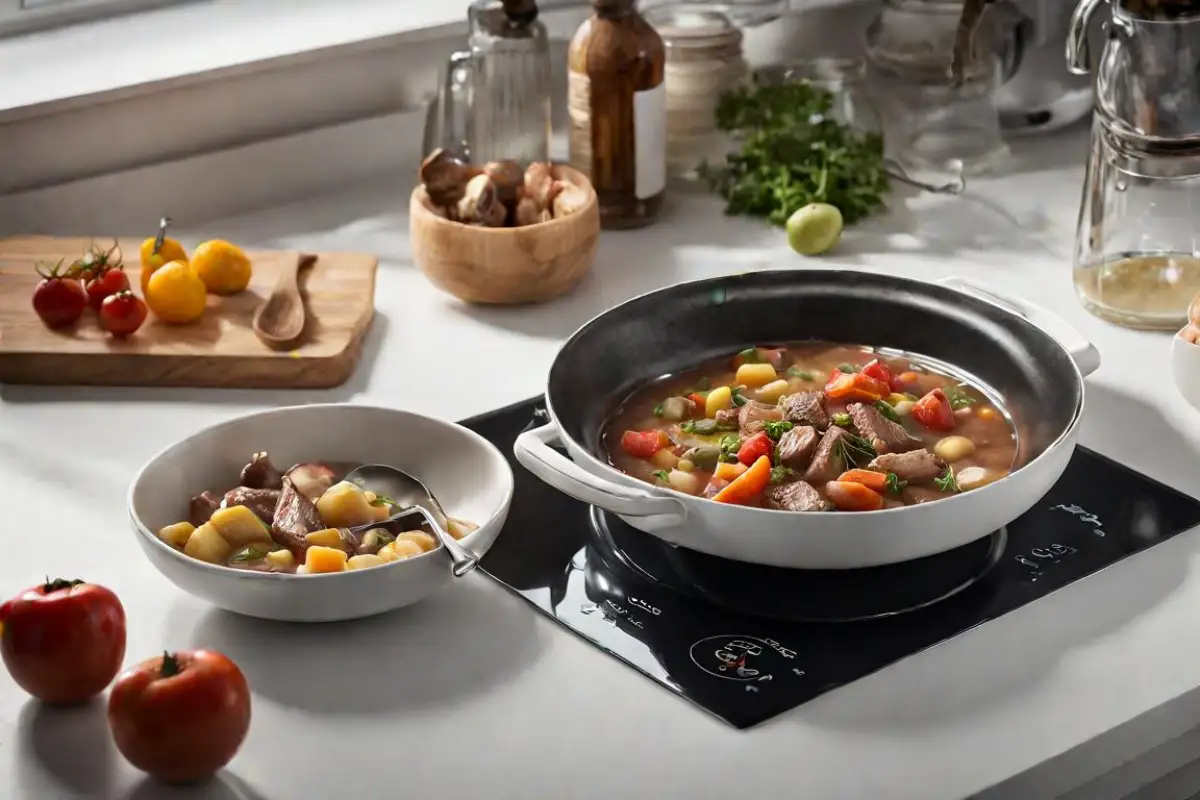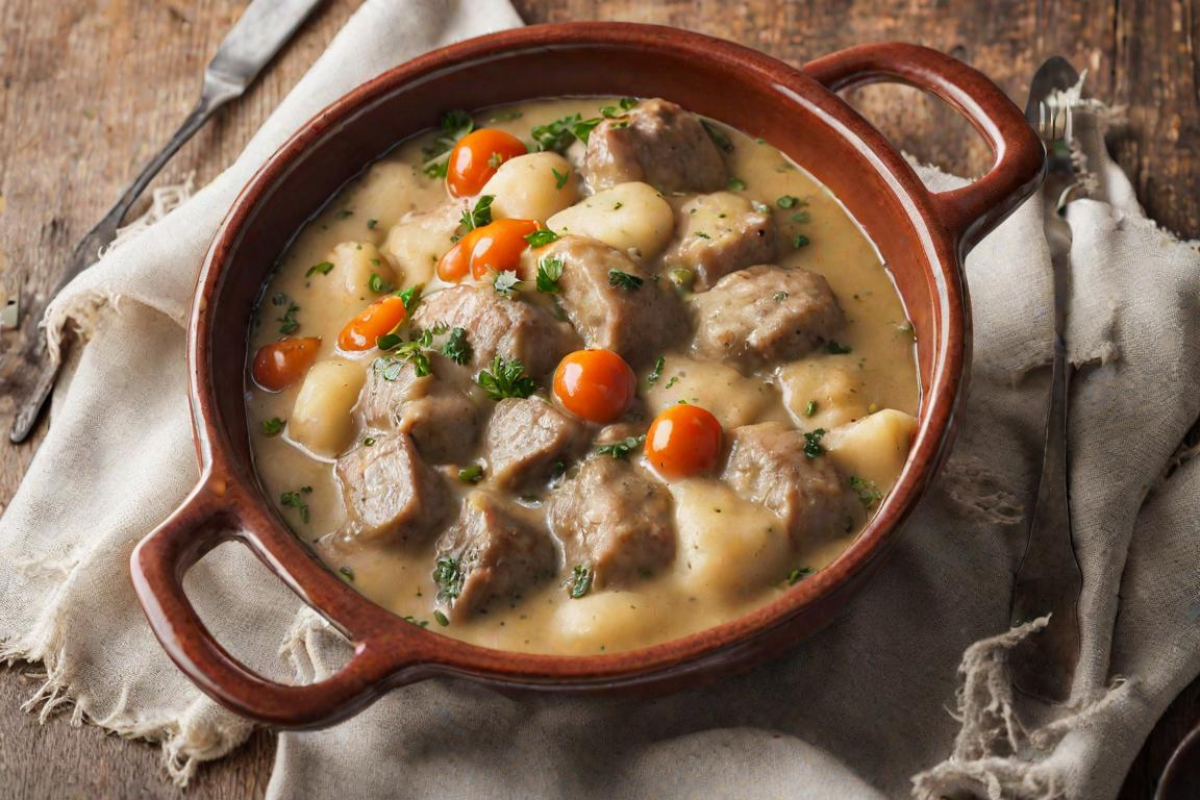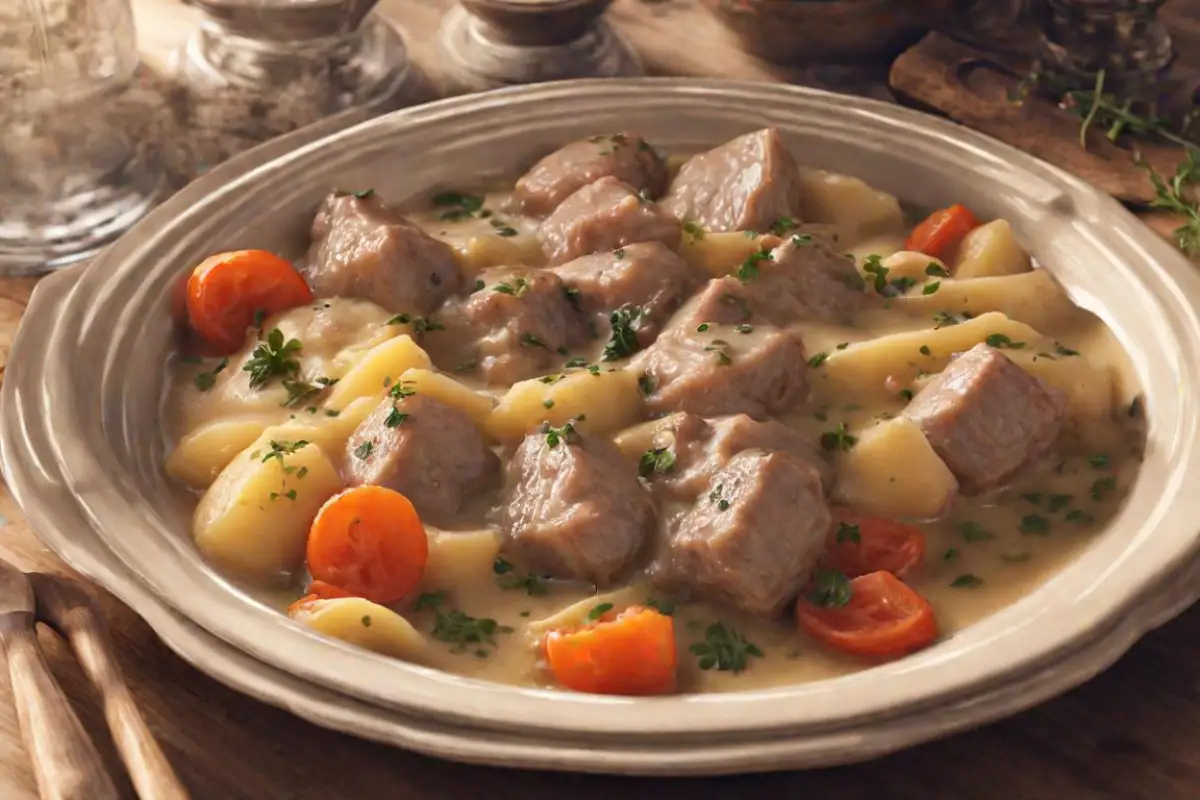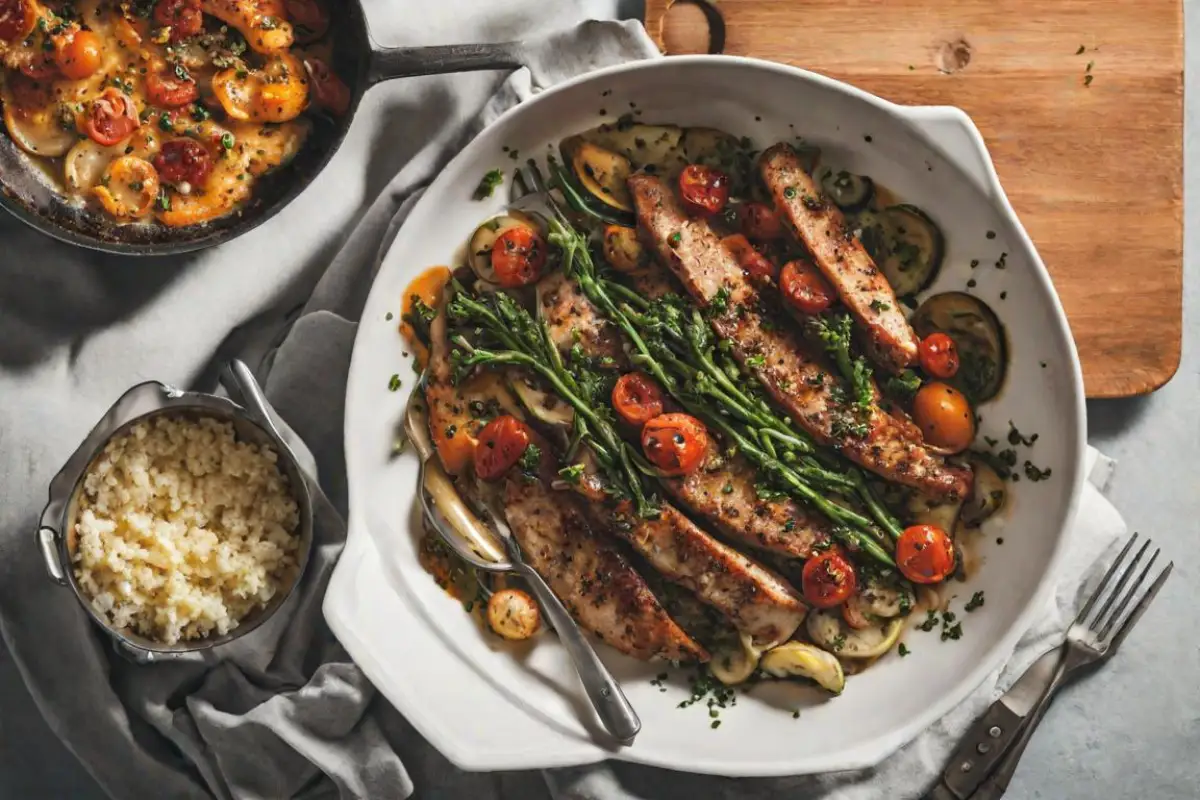Welcome to the world of culinary delights where every dish tells a story and every flavor creates a memory! Today, we’re embarking on a flavorful journey to unravel the mysteries of two beloved and classic dishes: Stew and Fricassee. Often found warming the hearts and homes of many, these dishes are staples in kitchens worldwide. But what sets them apart? Is it the ingredients, the cooking technique, or the history behind them? This article aims to explore the delightful differences between stew and fricassee, guiding you through their origins, preparation methods, and the unique characteristics that make each dish stand out. Whether you’re a seasoned chef or a curious foodie, this exploration will enrich your culinary knowledge and perhaps inspire your next kitchen adventure. So, grab your apron, and let’s dive into the delicious world of stews and fricassees!
What are Stew and Fricassee?-Definition and Origins
Stew: A Timeless Comfort
Stew is a culinary term that evokes images of comfort and heartiness. At its core, a stew is a slow-cooked dish, traditionally prepared in a single pot. This method involves simmering small pieces of meat and vegetables in a liquid, usually water or stock, over low heat. The slow cooking process allows the flavors to meld together beautifully, creating a rich and deeply satisfying dish. Originating from ancient cooking traditions, stews are found in nearly every culture around the world, each with its unique twist based on local ingredients and culinary practices.
Fricassee: Elegance in Simplicity
Fricassee, on the other hand, is a method of cooking that’s often associated with French cuisine, though its roots can be traced back to various European traditions. It typically involves first sautéing pieces of meat, usually chicken, without browning them, and then stewing them in a white sauce, often enriched with cream. The result is a lighter and more refined dish than a traditional stew, known for its delicate flavors and creamy texture. Fricassee represents a harmonious blend of sautéing and stewing, a culinary technique that has stood the test of time, offering a sophisticated yet comforting dining experience.
These two dishes, while similar in their use of primary ingredients like meat and vegetables, differ significantly in their cooking techniques and final presentation, reflecting the diversity and creativity of culinary arts.
The Art of Cooking: Techniques for Stew and Fricassee
Stew: Slow and Steady Wins the Flavor Race
Cooking a stew is an exercise in patience and simplicity. The process begins with browning the meat, a step that’s optional but adds depth to the flavor. Vegetables, herbs, and spices join the meat, followed by a generous pour of liquid, usually stock or water. The key to a perfect stew lies in its slow simmering. This method allows the ingredients to cook gently, melding the flavors while tenderizing the meat. The slow cook time transforms the liquid into a rich, flavorful sauce. Stew is versatile, embracing a variety of meats and vegetables, making it a canvas for culinary creativity.
Fricassee: A Delicate Dance of Techniques
Fricassee offers a refined approach, starting with gently sautéing meat without browning it for tenderness. After adding broth, the dish simmers, culminating with a white sauce, often a roux or cream and lemon blend, creating a velvety texture. This technique gives the fricassee its light, elegant character. For more insights, explore Deb Terrill’s perspective on fricassee as a sophisticated stew variant.
Both techniques, though different, highlight the beauty of slow cooking and the art of flavor development, offering unique taste experiences.
Ingredients and Variations: A Culinary Journey
Stew: A Melting Pot of Flavors
Let’s dive into the world of stews! Here, the possibilities are endless. Commonly, stews feature a mix of meat, such as beef, lamb, or chicken, and a variety of vegetables like potatoes, carrots, and onions. The beauty of stew lies in its flexibility; you can easily tailor it to your taste or whatever ingredients you have on hand. Across different cultures, stews take on unique flavors. For instance, a Moroccan tagine dazzles with spices like cumin and cinnamon, while a Hungarian goulash offers a paprika-infused warmth.
Fricassee: Refined and Versatile
Now, let’s turn to fricassee. Traditionally, it’s made with chicken, but you can also use rabbit, lamb, or even seafood. The dish often includes aromatic vegetables like onions and mushrooms, simmered in a light broth. The white sauce, enriched with cream or egg yolks, adds a luxurious touch. Each region adds its spin, like the addition of lemon in a Greek fricassee or the use of white wine in a French version. This dish is a testament to the art of balancing flavors and textures.
Both stews and fricassees offer a delicious journey through different cultures and cooking styles, showcasing the versatility of similar ingredients used in diverse ways.
Nutritional Perspectives: Health Benefits of Each Dish
Stew: Nourishing and Wholesome
Stews are not just comforting; they’re also packed with nutrition. The slow-cooking process helps in retaining the essential nutrients from the meat and vegetables. Rich in protein from the meat and loaded with vitamins from the vegetables, stews are a balanced meal. They can also be a great source of dietary fiber, especially when loaded with a variety of vegetables and legumes. Plus, if prepared with lean cuts of meat and mindful of the oil used, stews can be a hearty yet healthy option for any meal.
Fricassee: Light and Nutritious
Fricassee, with its lean protein source and use of light broth, stands out as a healthier option. It’s generally lower in fat compared to traditional stews, especially when made with skinless chicken and a minimal amount of cream in the sauce. The inclusion of vegetables like mushrooms adds beneficial nutrients without many calories. This makes fricassee an excellent choice for those seeking a lighter, yet satisfying, meal.
Both dishes, stew, and fricassee, offer unique nutritional benefits, making them not just a treat for the taste buds but also a good choice for maintaining a healthy diet.
Serving and Enjoyment: How to Best Savor these Dishes
Stew: Cozy and Versatile
Stews are the epitome of comfort food and shine brightest when served warm. They pair beautifully with a variety of sides – think crusty bread to soak up the rich sauce, or a bed of fluffy rice or creamy mashed potatoes. For a healthier twist, serve your stew over a portion of whole grains like quinoa or barley. The robust flavors of stew make it a perfect winter dish, but it’s equally enjoyable year-round, adapting to seasonal vegetables and preferences.
Fricassee: Elegant and Flavorful
Fricassee, with its creamy texture, calls for a slightly different approach. It pairs wonderfully with lighter sides, such as steamed vegetables or a simple salad, to balance the sauce’s richness. For a more filling meal, serve it over a bed of rice, pasta, or even a slice of toasted bread. The key is to let the delicate flavors of the fricassee be the star of the show. Ideal for a fancy dinner or a special occasion, fricassee offers a touch of elegance to your dining experience.
Both stew and fricassee can be tailored to suit any occasion, whether it’s a casual family dinner or a more formal gathering. Their versatility in pairing makes them beloved dishes worldwide.
Culinary Uses in Different Cuisines
Stew: A Global Culinary Star
Stews are truly a worldwide culinary staple, effortlessly adapting to the flavors and ingredients of each region. In the American South, for example, you can savor the hearty Brunswick stew, packed with chicken, corn, and tomatoes. Journeying to Africa, you’ll discover the Ethiopian Doro Wat, a spicy chicken stew enriched with the exotic berbere spice. Venturing further to Asia, you might indulge in the Japanese Nikujaga, a stew simmered in soy sauce with beef and potatoes. Each of these regional variations brings a unique twist, beautifully reflecting the local culinary traditions and tastes.
Fricassee: A Dish with Many Accents
Similarly, fricassee has been embraced and adapted by various cuisines. In the Caribbean, you might find a fricassee with a tropical twist, using local spices and citrus. Italian variations might include a fricassee with white wine and herbs, highlighting Mediterranean flavors. These adaptations showcase fricassee’s versatility and its ability to meld with different culinary styles, making it a beloved dish in many countries.
Both stew and fricassee, in their myriad forms, demonstrate the incredible diversity of global cuisines, offering a delectable taste of different cultures and traditions.
Personal Insights and Cooking Tips
Stew: Tips for the Perfect Pot
Cooking a great stew is all about patience and personal touches. Here are some tips to elevate your stew:
- Brown the Meat: For added depth of flavor, brown the meat before adding liquids.
- Layer the Flavors: Start with onions and garlic, then add your meat and harder vegetables. Add softer vegetables later in the cooking process.
- Low and Slow: Let your stew simmer gently. This slow cooking makes the meat tender and flavors rich.
- Season to Taste: Don’t be afraid to adjust the seasoning. A dash of salt, pepper, or even a pinch of sugar can make a big difference.
Fricassee: Crafting Elegance in the Kitchen
Fricassee is about finesse and balance. Keep these tips in mind for a delightful dish:
- Gentle Sautéing: Avoid browning the meat to keep the dish light.
- Use Quality Broth: A good broth is the backbone of a fricassee. Homemade or high-quality store-bought broth can enhance the dish significantly.
- Creamy Finish: Add the cream or white sauce at the end to avoid curdling and to maintain a smooth texture.
- Herbs for Freshness: Fresh herbs like parsley or thyme add brightness and elevate the overall flavor.
Whether it’s a robust stew or a delicate fricassee, remember that cooking is an art. Feel free to experiment and make each dish your own. Your kitchen, your rules!
FAQs Section
What Makes Something a Fricassee?
A fricassee stands out for its distinctive cooking approach. This method starts with lightly sautéing meat, typically chicken, ensuring not brown it. After sautéing, the meat is gently simmered in a broth. The final touch to the dish is the addition of a white sauce, which is often a roux or a blend of cream and lemon juice. This process not only ensures the meat remains tender but also infuses the dish with a rich flavor and a creamy texture. For more insights into how this technique differs from other cooking methods, particularly sautéing, explore our detailed comparison at What is the Difference Between Sauté and Fricassee?
What’s the Difference Between Braising and Fricassee?
Braising and fricassee both involve cooking meat in liquid, but there are key differences. Braising typically includes browning the meat first, then simmering it in a small amount of liquid. Fricassee, however, starts with sautéing the meat without browning, followed by simmering in more liquid and finishing with a white sauce. The result is a lighter, creamier dish in fricassee compared to the richer, more intense flavors of braised dishes.
What Does Fricassee Mean in Italian?
In Italian cuisine, the term ‘fricassea’ mirrors the French fricassee in its cooking approach. Typically, this method involves simmering meat, like chicken or rabbit, in a creamy white sauce infused with herbs. Occasionally, white wine is added for an extra layer of flavor. The Italian version of this dish masterfully combines these elements, achieving a delicate balance of tastes. This reflects the core of Italian cooking – simplicity and elegance seamlessly blended.
What is the Difference Between Fricassee and Blanquette?
Both fricassee and blanquette are French dishes that involve simmering meat in a white sauce. The main difference lies in the preparation of the meat. In fricassee, the meat is sautéed before simmering, whereas in blanquette, the meat is not browned and is cooked from the start in a white broth. Blanquette also typically has a more pronounced lemon or vinegar flavor compared to the milder fricassee.
Stew and fricassee, each with its distinct cooking style and flavors, are more than just dishes; they’re a celebration of culinary diversity and creativity. Whether you choose the heartiness of a stew or the elegance of a fricassee, these dishes offer a world of flavors waiting to be explored. So, the next time you’re in the kitchen, why not try your hand at these classics and see where your taste buds take you? Happy cooking!
READ ALSO: Candy Corn Flavors: What are the Three Signatures?




